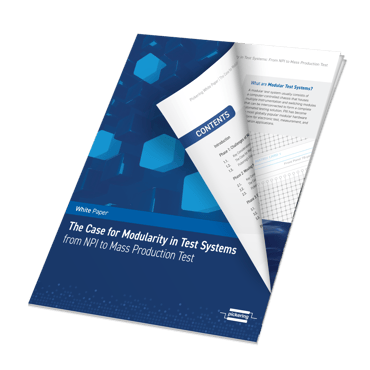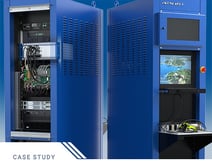Test Systems for New Products: The Case for Modularity, Part 1
When it comes to designing and manufacturing automated functional test systems, today’s engineers find that modularity is key. By using modular hardware, organizations can more effectively manage test equipment from new product introduction (NPI) through to mass/high-volume production.
In this three-part series, we will explore key considerations for creating modular test systems that can evolve through every phase of the product lifecycle, beginning here with test systems for new products.
As products move through their lifecycles, organizations face different challenges. In the early stages of new product introduction (NPI), for example, there is a need to quickly and efficiently test the product to verify design requirements. This can be best accomplished by taking into consideration the following:
1. Bridge the Gap Between Design and Test Engineers
One of the easiest ways to ensure an effective and efficient test system is to consider test early in the product design phase. Design engineers are often looking for designs to fulfill the product requirements without taking into consideration how difficult the product will be to test. By bringing test engineers into the discussions early, they can advise on any testability that may need to be added into the product design.
This conversation should look at all products the test system will need to test, including if possible potential future product enhancements and new designs. This will help to ensure the test system design incorporates the necessary flexibility and scalability to efficiently handle these future requirements.
2. Evaluate Ease of Use and Adaptability of Test Equipment
Once the product spec and test expectations are set, it’s important to get a test up and running quickly. Fast development and deployment of the test system allow engineers to verify the product and move forward as quickly as possible.
At the first run of a test system, issues may arise. As the debugging process takes place, erroneous connections can damage switching subsystems, so being able to quickly diagnose and repair switch failures is imperative to keep the testing process moving forward. By using flexible test equipment, engineers can quickly adapt the test system to design changes without having to completely redesign it.
3. Pay Attention to Equipment Cost and Availability
Cost and availability are always important, but engineers are often thinking only of the verification testing needed in product development. If a product grows and scales and requires the same test system design for high volume production test, it may require repeat purchasing of extremely expensive or minimally available components, which may cause cost and time overruns in the future.

Modular Test Systems for the NPI Phase
Designing a new test system as early as possible in the product design process and basing it on an industry-standard modular architecture will help organizations succeed in the considerations above. Modular test systems are easy to reconfigure and adapt, meaning they can be quickly adapted to meet changing needs as a product is being defined.
Modular systems are easier to reconfigure and expand than traditional fixed-architecture systems. This flexibility can save considerable time and effort as products evolve, as well as provide the ability to easily adapt the system as application requirements change.
And, beginning with a platform like PXI doesn’t tie an organization to a specific vendor – instead, they can mix and match the best performing components as needed. Similarly, modular systems don’t tie an organization to a specific programming interface, allowing engineers to use their preferred platform and tools, including graphical programming and automated signal routing.
Read Part 2: Test Systems for New Products: The Case for Modularity





